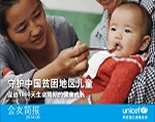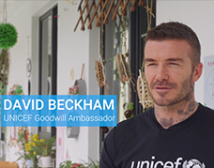-
No child should suffer from violence and abuse. Learn to identify the signs of violence against children, child abuse and child exploitation.
-
Children who experience or witness violence often remain silent out of fear, shame or stigma. Some come to accept it as a normal part of life.
-
While some violence is perpetrated by strangers, most is carried out by people children know and should be able to trust and look to for protection.
-
Protect your child from all forms of neglect, violence, exploitation and abuse, including physical, psychological, sexual and emotional abuse.
-
Protect the children in your community from all forms of violence, abuse and exploitation, such as child trafficking or child labour.
-
Certain groups of children are particularly vulnerable to violence. These include children without caregivers, children with disabilities, children of minority groups, children living or working on the street, children in conflict with the law, and children who are refugees, displaced or migrating.
-
Everyone in the community, including parents, relatives, friends, neighbors, community members, and authorities, are responsible for protecting children from all forms of violence, abuse, exploitation, neglect and harmful practices.
-
Children should be able to attend school rather than work.
-
Child slavery, children engaged in forced, exploitative or dangerous work, and trafficking are all forms of violence against and exploitation of children.
-
Help children who are victims of sexual abuse or exploitation. Immediately report suspected cases of sexual abuse and exploitation of children to the local authorities for investigation.
-
Community support and engagement is extremely important to protect children in the community from trafficking.
What to do if you suspect a child has been abducted, trafficked or exploited?
1. Be aware of the signs that a child may have been abducted, trafficked or exploited:
a. Children are visibly unwell, hurt, hungry, undernourished and/or dressed in insufficient or tattered clothing;
b. Children without caregivers at night and/or in public areas that are potentially dangerous (e.g., in heavy traffic, or adult entertainment areas);
c. Children who appear to be afraid or experiencing some type of distress;
d. Children who are not in school during school hours.
2. Take note of:
a. Physical description of the child,
b. Other persons accompanying the child,
c. Exact location and time that the child was seen.
3. Contact local officials and report suspected child trafficking cases on these hotlines:
a. Police emergency services telephone number 110
b. All China Women's Federation hotline: 12338
c. Reporting mailbox in the website of Ministry of Public Security
http://www.mps.gov.cn/n16/n983040/n1294479/n1552343/index.html
Special note: Under a new 2010 regulation, reports of child abduction or trafficking will be registered and investigated by the police with priority.
Download:
Click here




























